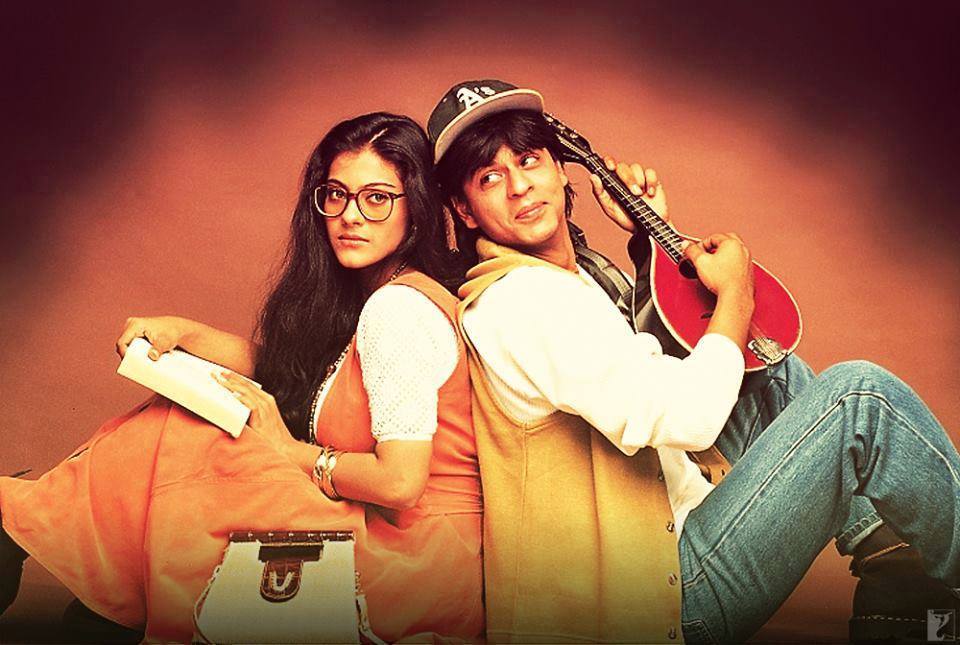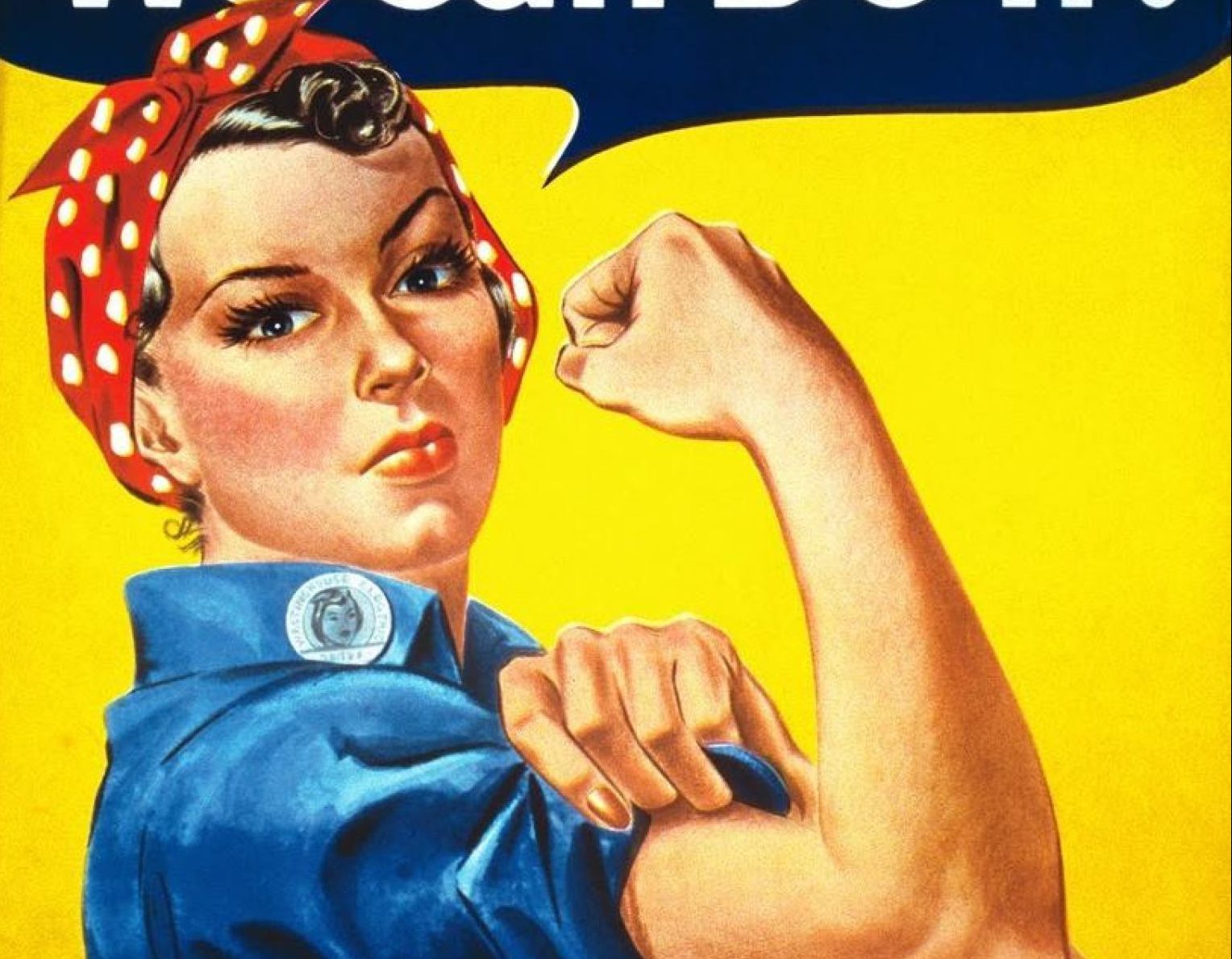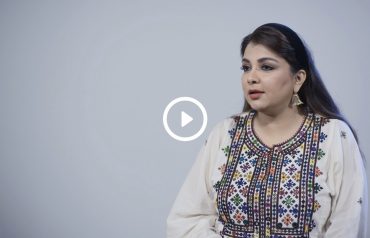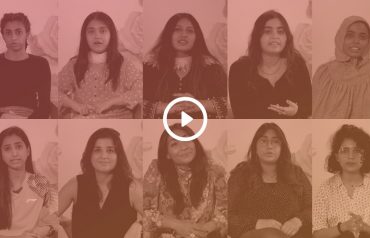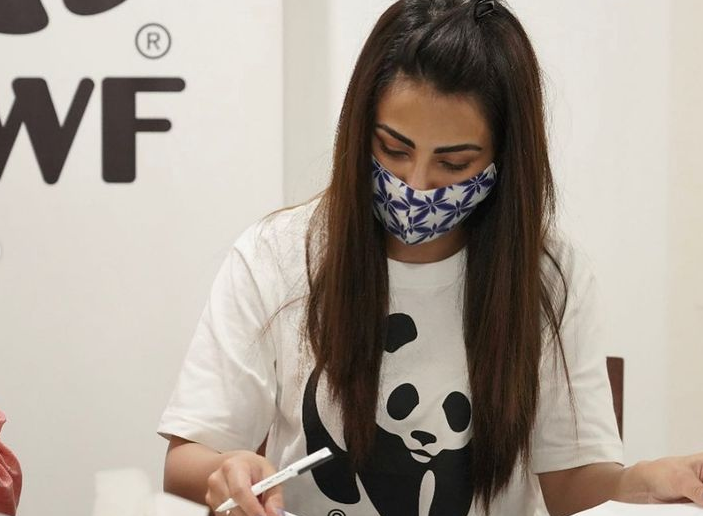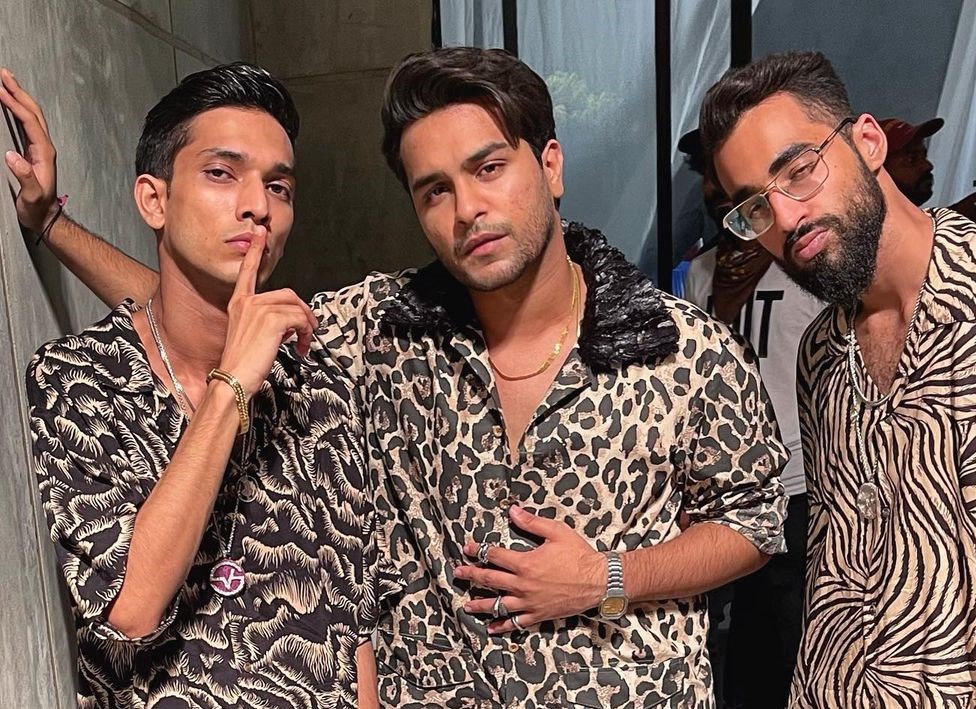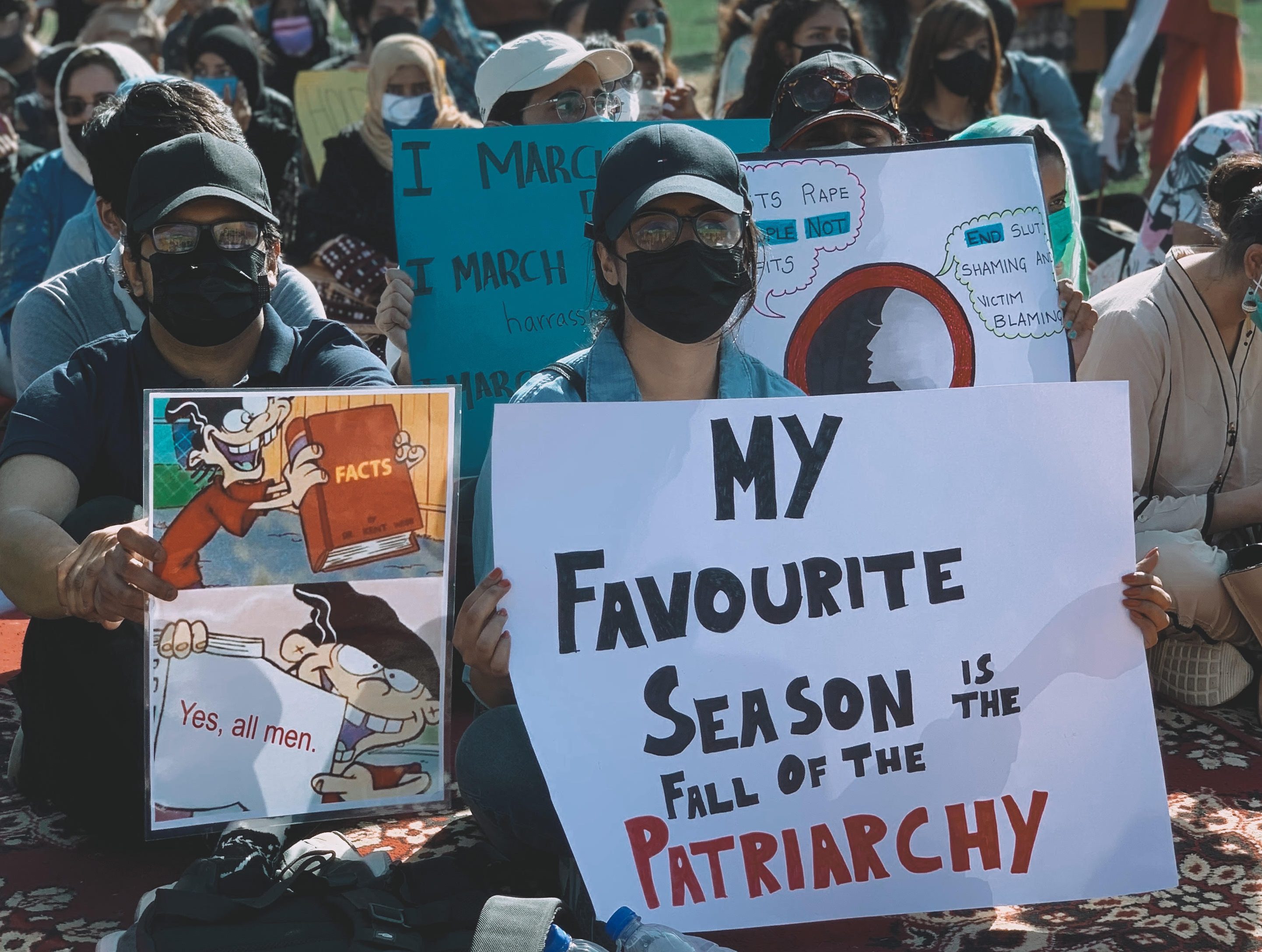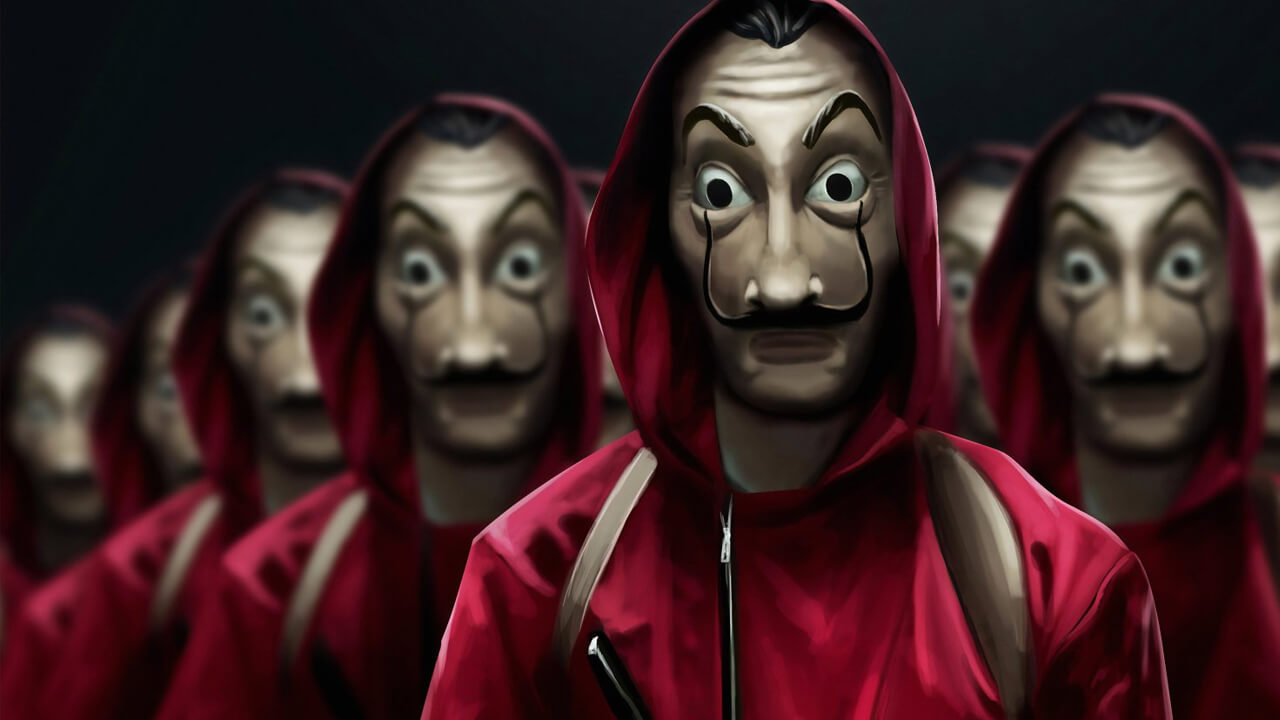KARACHI: Pakistani illustrators have proven, time and again, how protests can be peaceful yet uncompromising. Contrary to what a lot of people in this country want to believe, resistance cannot be subtle. In spite of being non-violent in the past, resistance movements that are still remembered have all been bold, loud and have shaken the foundations of the status quo.
Aurat March every year is a clear example of how a peaceful protest, with provocative posters and slogans, causes a strong reaction from its opponents. The posters are an act of protest all by themselves. In fact, every year, the posters and artwork get more attention than the protesters or even the organizers.
Even though there are many celebrities who speak out against misogyny, such as Mansha Pasha, Jami, Osman Khalid Butt, Meesha Shafi, Asim Abbasi, the contributions of illustrators and the impact their work has had cannot be denied. From designing clothes to Aurat March posters – a number of these notable illustrators have been women. Some of these illustrators have faced cyber-bullying for their work, but that has not stopped them from standing up against the patriarchy.
While there is no denying the ways in which male allies add to the feminist movement, these women have projected their firsthand experiences in Pakistan, and done so rather beautifully:
Shehzil Malik
You simply cannot forget the contributions of Shehzil Malik when talking about resistance through art in Pakistan. This woman beautifully sculpts her ideas into hard-hitting illustrations depicting the ugly underbelly of society. She’s also famous for all the artwork she has made for the annual Aurat March, or the other political statements she makes against extremism and shadeism in the country.
Komal Ash
Khalil-ur-Rehman, with his rampant displays of misogyny during the airing of his hit TV show, Mere Paas Tum Ho, created quite a ruckus. From his appearance on live shows to his controversial dialogue ‘do takkay ki larki‘, Khalil-ur-Rehman became the talk of town and those who wished to benefit from his misogyny gave him more air time and interviews and therefore amplified his voice even more. Komal Ash took the opportunity to say what we were all thinking.
Read: COMMENT: Why does Khalil Ur Rehman Qamar hate women?
Aiman Noor
Our colonial hangover has been one of the biggest challenges of our society. Most middle-aged women want fair bahus and women put themselves through a lot of harassment and rejection in order to keep up.
The idea has been inculcated further by fairness creams and the companies that market their product. This insecurity is further exploited by commercials; we even see local makeup brands straight up ignoring the range of darker tones and going for milky white as a tone instead – a shade majority of the women in Pakistan do not have. In such a time, it is necessary to remind ourselves that being dark is not a flaw, and Aiman Noor’s work does just that.
Maliha Abidi
During the lockdown, most societies saw a surge in domestic abuse cases. Pakistan ranks as the sixth most dangerous country for women. According to the United Nation’s Global Database on Violence Against Women, the statistics suggest lifetime physical and/or sexual intimate partner violence against women to be about 24.5% while physical and/or sexual intimate partner violence in the last 12 months to be 14.5%. Maliha Abidi’s work brought attention to these numbers.
Watch: #AuratMarch: Rising Up For Equality
Mahnoor Ahmad
Marriage is not supposed to be nearly as difficult as it is made in Pakistan. With a long list of things the groom’s family hands to the father of the bride as dowry, it is justified with the following thought: “Aap apni khushi sey derahey hein. Apki beti kay hi kaam ayega.” (You’re doing it because it would make you happy. Your daughter will be the one who ends up using these things after all.) Films like Load Wedding have brought attention to how archaic these practices are, artists like Mahnoor are using their platform to do the same.
Anain Shaikh
Although it is somehow very confusing for a lot of people who have unfortunately still not been able to master the art of googling definitions, feminism is not against men. Some very notable men around us have been strong allies to the movement. Feminism is against the patriarchy; the Urdu word for which is pidarshahi. It is described as a system that places authority in the hands of men, with women being submissive to that power and usually being exploited by that authority.
Read: This is how you shut down a misogynist
In conclusion, awareness is the first step. The realisation that a violation has occurred is key to standing up against that violence. These illustrators are trying to do just that. A number of movements started through awareness, even our own movement for azaadi in British India. It sprung only after the educated groups of people started to question their surroundings and they used art and literature to spread that awareness.
An important thing to add here is, these illustrators are not responsible for the connotations you attach to their slogans and artwork. It is their expression and they know best what it means. We wish the very best of luck to these brave girls, and may Pakistan see more of such illustrators!

 source: https://www.instagram.com/shehzilm/
source: https://www.instagram.com/shehzilm/


